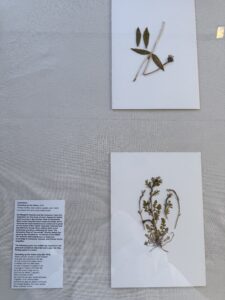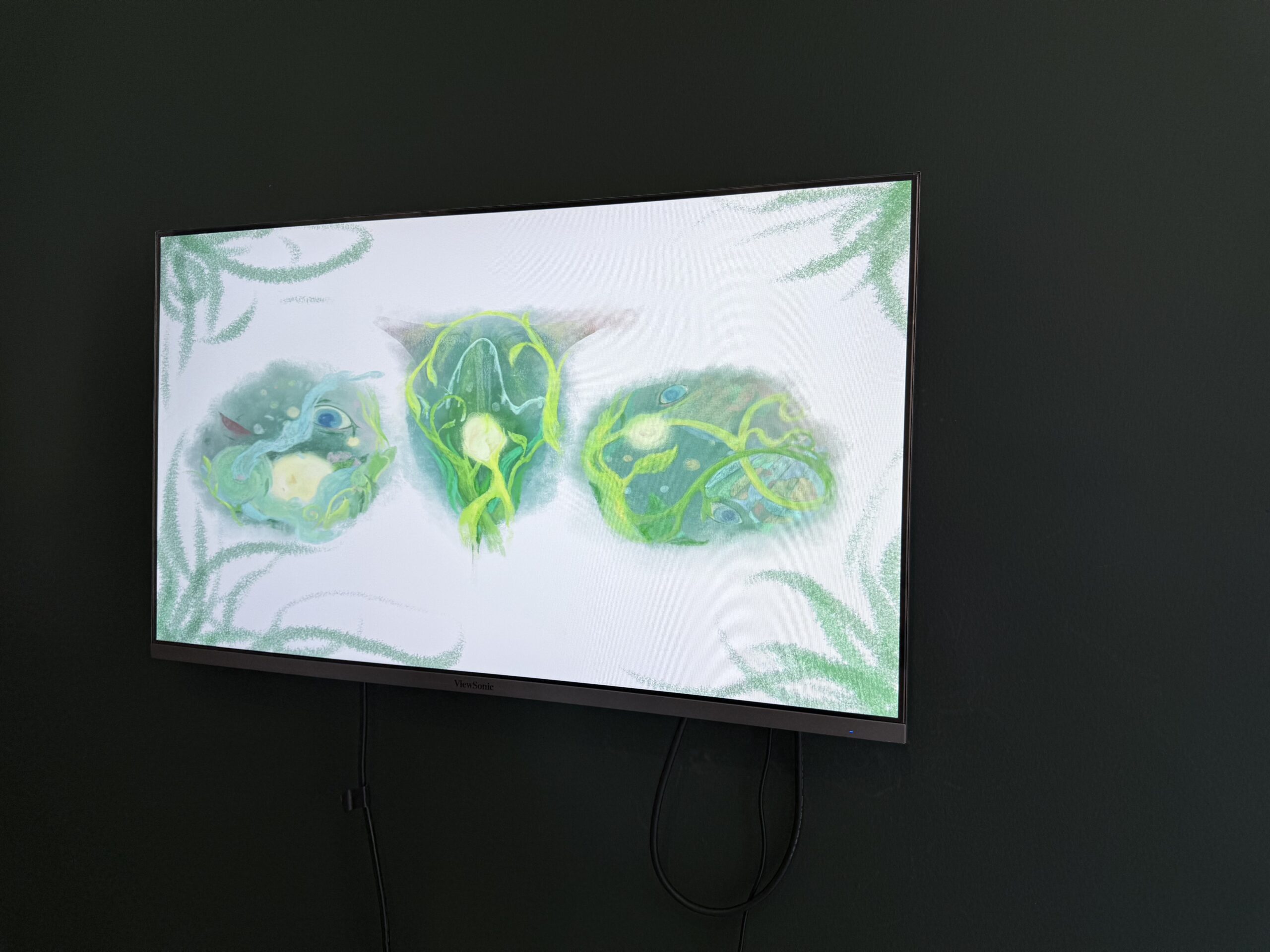This week, I visited the MA CAP pop-opening at Inverleith House, an exhibition that showcased a variety of interactive and thought-provoking works. The show was rich in engagement, encouraging visitors to reflect on themes of nature, history, and accessibility. Many pieces invited participation, blurring the boundary between viewer and artwork. The curatorial approach was particularly effective in fostering an environment where audiences could not only observe but also engage in dialogue with the works, making the experience more immersive.
Among all the fascinating works, my favorite was Rounding up the Aliens (2025) by Layla Knox. This delicate piece, featuring pressed plants arranged on textured boards, stood out for its subtle yet profound storytelling. Inspired by Ida Margaret Hayward’s herbarium, the work reflects on the historical classification of ‘foreign’ plants. Hayward, a botanist from the early 20th century, meticulously identified and recorded seeds transported via trade routes, contributing to botanical knowledge while also engaging in a colonial discourse of categorization and exclusion. Knox’s piece reinterprets this history through a contemporary lens, using handmade materials to evoke the fragility of memory and the natural world. The inclusion of a personal poem written by Hayward adds an intimate layer, connecting scientific documentation with personal reflection.

Photograph taken by the author
I found this work particularly compelling because it raises questions about how we define ‘native’ and ‘foreign’ in both ecological and cultural contexts. In today’s world, where migration and displacement are pressing issues, the piece subtly critiques the ways in which classification systems—whether in botany, history, or society—can reinforce exclusionary narratives. The work’s quiet beauty draws the viewer in, while its underlying narrative provokes deeper thought.
Overall, the exhibition successfully created a space where interaction and contemplation coexisted. The works not only engaged the audience physically but also encouraged intellectual and emotional reflection. The careful attention to materiality and historical narratives within many of the pieces added richness to the experience. I look forward to seeing how these themes continue to develop in future projects, especially in how contemporary artists reinterpret history through tactile, interactive, and participatory methods.



7 March 2025 at 17:38
Presentation- The slides and verbal information were coherent and presented in a clear and professional manner. Always remember to reference images in your slides! You did not run overtime, which indicates that you practiced beforehand and took time restrictions as well as audience engagement into consideration. Your curatorial pitch and the theme you wish to explore is very interesting. Some things to re-consider are- the artists that you mention are all established artists, I suggest you start looking for emerging artists that as an emerging curator you can collaborate with. Consider contemporary artist that are inspired by Arte Povera, Art Brut, and Outsider Art. The Dematerialisation of Art and the book written by Lucy Lippard is another excellent example that you can read on if you have not already. Further consideration is needed about the space. Please, research and or visit other potential places. Have a look at the festival Hidden Door that happens in Edinburgh every year or the programme stalled Spaces that happened in Glasgow a few years ago. Overall the artists, space, and exhibition time frame should all be re-considered. Other things to consider are budgeting and or funding opportunities.
Blog- I am very pleased to see that you have started engaging in independent research about the collective. From now on i suggest that you start meeting outside of class time. There is a good balance between contextual materials and theory. The critical reflections you include in the pluralistic perspectives entry is strong and informative. Make sure this is how you continue to reflect on the exhibitions and or artists you are researching. In this entry I also enjoyed reading and learning about your favourite work and why you liked it; in a way the piece-Rounding up Aliens – can relate to your own curatorial idea. Think about this and draw from it to consider artists and works that you could be a part of your project. A comment that I also mentioned about your presentation is that I want to start reading and looking at research you have conducted on more emerging contemporary artists that relate to your own curatorial project. I want to know who you are looking at and why? Be aware that blog entries are getting shorter from the beginning towards the end, also there is a large gap between posts from the 16th of February to the 2nd of March. Pleas make sure that you catch up. Finally, I could not find a blog entry on the feedback you left for two of your peers. Please make sure that you include your review as a blog post and do not only post it as a comment to your peers blog. If you have forgotten to do this all together please make sure that you complete the task by next Wednesday!